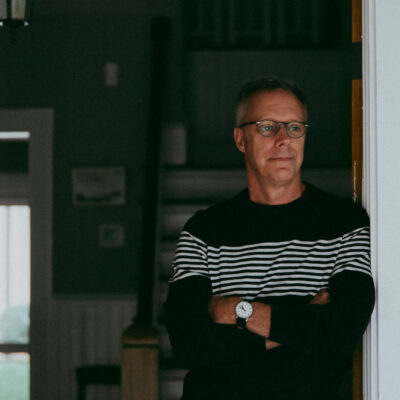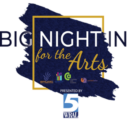Applications for our Artists in Schools program are accepted once a year. Prospective teaching artists will submit an on-line application and provide supporting documentation using Submittable, an online application platform.
While only one application fee is due each year, a separate application is required for each program that an artist would like to feature in the Artists in Schools Directory.
It is recommended applicants spend time looking through the current Artists in Schools Directory before submitting an application as the questions in the application itself relate directly to the items included on a directory page. When a program is accepted, the text provided in the application is used to build a new directory page for that program exactly as provided.
After reviewing pages in the current directory. Use the following step by step guide to complete and submit your application:
1. Establish a Submittable account and find the appropriate application form.
2. Review questions, compose answers and upload all required materials.
Artist Information
This section of the application requires the following information:
- Name or group name and additional information regarding the artist or artists members
- Relevant contact information
Program Information
This section of the application requires the following information:
- Program Title — name clearly illustrating the program’s subject or theme. Be creative but concise.
- Program Description — an overview of the program with details describing how students will participate, what students will learn, curriculum connections, relevancy for particular grade levels, etc. The description should help the reader visualize what happens during the program step by step and understand the program’s outcomes.
- Program Abstract — a one sentence description to accompany the program title on the directory’s homepage. The abstract should pique the interest of the reader.
- Artist Background — one concise paragraph about the artist/organization. May include mission, philosophy, qualifications, experience working in educational settings, key accomplishments, etc.
- Space Requirements — any physical element(s) of the space/room that are necessary for successful implementation of the program. Examples include minimum space dimensions, ceiling height measurements, specific floor materials, indoor/outdoor space, access to running water, etc. Audience size limits should be addressed in this section.
- Technical Requirements — any element(s) that a school may reasonably be expected to have for successful implementation of the program. Examples include electrical access, sound equipment, piano/keyboard, chairs/tables, supplies, running water, volunteers, set-up/strike time, etc.
- Fee Structure — the overall fee for the program and, if appropriate, additional expenses (materials, travel etc). Once published in the directory at the beginning of the school year, fees and expenses must be honored throughout the next school year
- Program Type — programs should fit into one of our four categories:
performance
workshop/residency
writer residency
workshop/residency specifically designed for students with disabilities
- Grade Level — programs should be appropriate for ages based on grade levels. Grades are defined as:
elementary (K-5)
middle (6-8)
high (9-10)
If a program can be adapted to different grade levels, the program description should briefly describe how.
- Artistic Discipline — the Directory identifies eight disciplines for which students focus their learning. Selections include:
dance
literary
music
storytelling
theatre
visual arts
STEAM (Science, Technology, Engineering, Math through the Arts)
multi-disciplinary
- Cultural Context (optional) — when appropriate, the directory helps identify the cultural context(s). This classification is specific to the program itself and need not reflect an artist’s own cultural identity.
- Photo — an image that represents the artist’s work with students. Only high quality photos will be accepted – 300 dpi preferred. Photos that are cropped close with minimal visual clutter are most appealing. If appropriate, a head shot is accepted.
Required Materials
The selection panel reviews materials to assess an applicant’s artistic expertise and proficiency in leading an educational program in a school setting. These materials are for panel review only and are not shared with the general public.
- Artist’s resume — upload a current resume that includes relevant education, special training, awards, performing/professional experience, teaching experience, etc.
- Programmatic Work Sample — a video that takes the place of an in-person observation. Footage should be 10-minute in length and demonstrate not only the applicant’s artistic proficiency, but also applicant’s teaching skills with school-aged children. Student reactions, interactions, and engagement should be either seen or heard. The work sample video should be no older than 3 years and accessible via an artist’s personal website or YouTube.
- Artistic Work Sample (optional) — if the programmatic work sample does not demonstrate the applicant’s artistic proficiency, an artistic work sample may be provided. For example, literary artists should submit writing samples and visual artists should submit images. If submitting a web link, upload a document that includes a link to video/audio clip.
Supplementary Material
This section requires applicants to provide references and upload additional documents.
- References — at least two professional references who are familiar with the applicant’s current professional work with children (grades K-12). Provide name, title, and relationship to applicant, along with a phone number and email address.
- Letter of Support (optional) – one letter of support may be included
- Educational materials — artists provide these materials to schools for teachers’ use before and/or after Artists in Schools programs. Accepted materials include but are not limited to: teacher guides, student guides, pre/post-visit activities, vocabulary lists, art information, historical/cultural information, suggested connections to classroom curricula, URLs to videos. Materials must be original to the artist or an artist must have permission to use them. Promotional materials such as brochures and flyers are not accepted.
- Lesson plan (workshop or multi-day residency only) — a sample of plans, activities, etc. for a one-day workshop or a multiple days of a residency.
3. Review, edit, and print your application.
4. Submit the application by selecting the “Submit” button on the bottom of the electronic document. Once submitted, you cannot alter or update an application. If submitting more than one application, prepare a complete application, including all the artist information and required materials, for each program.
5. Pay the application fee. A one-time annual fee is due per artist, regardless of the number of applications submitted. Instructions for payment will be included in the application receipt which is emailed immediately following submission.
6. Save the application received email for documentation purposes.




